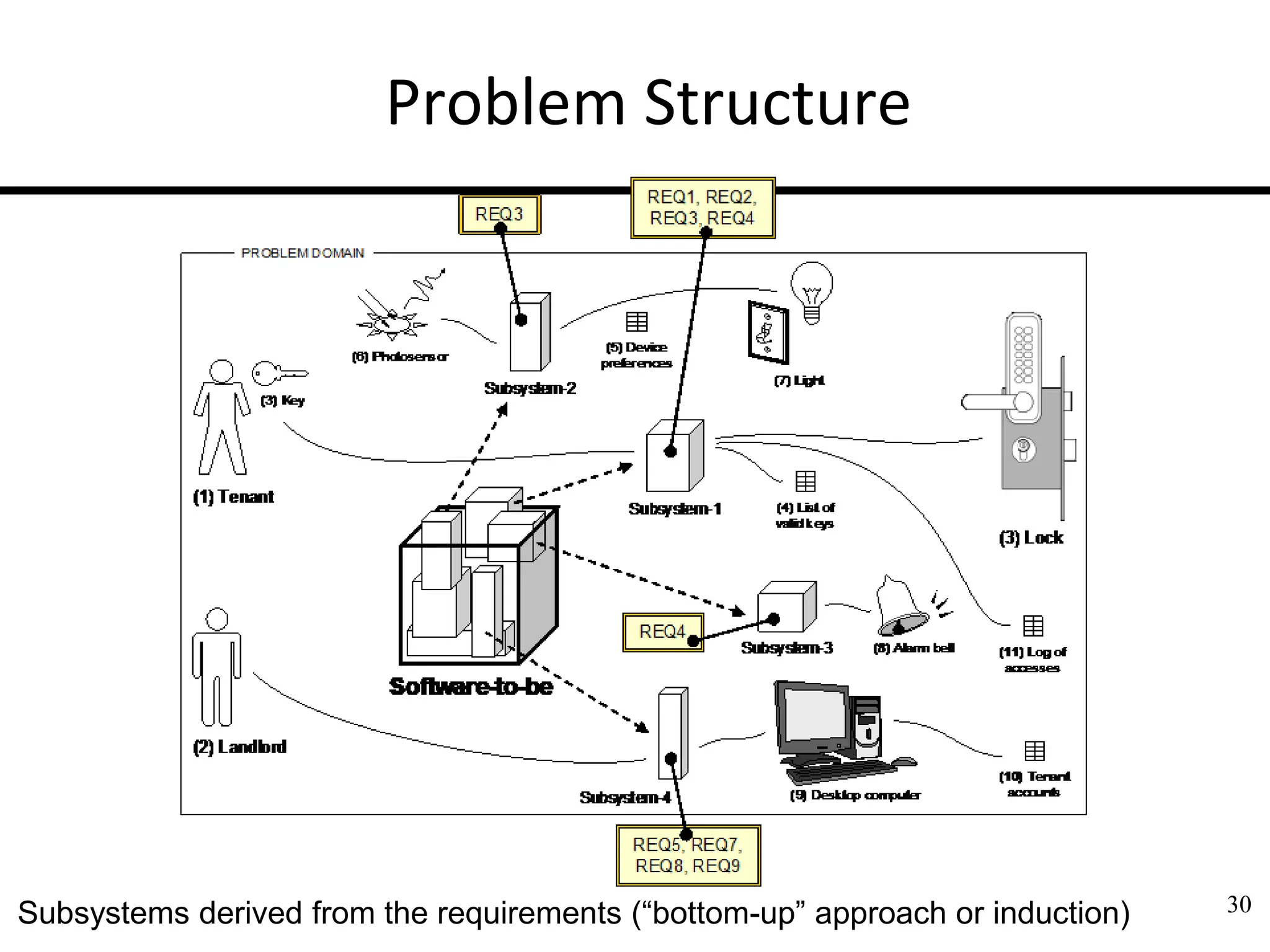The document discusses software architecture and architectural design. It begins by defining software architecture as the high-level decisions that determine a system's structure and components and their relationships. It discusses why systems are decomposed into parts and common architectural decisions involving mapping software to hardware and system decomposition. It describes key architectural concerns like system decomposition, cross-cutting concerns, and conceptual integrity. It outlines common views for documenting architectures like module, dependency, layered, and component-connector views. Finally, it discusses well-known architectural styles like client-server, layered, and REST and provides examples of each.

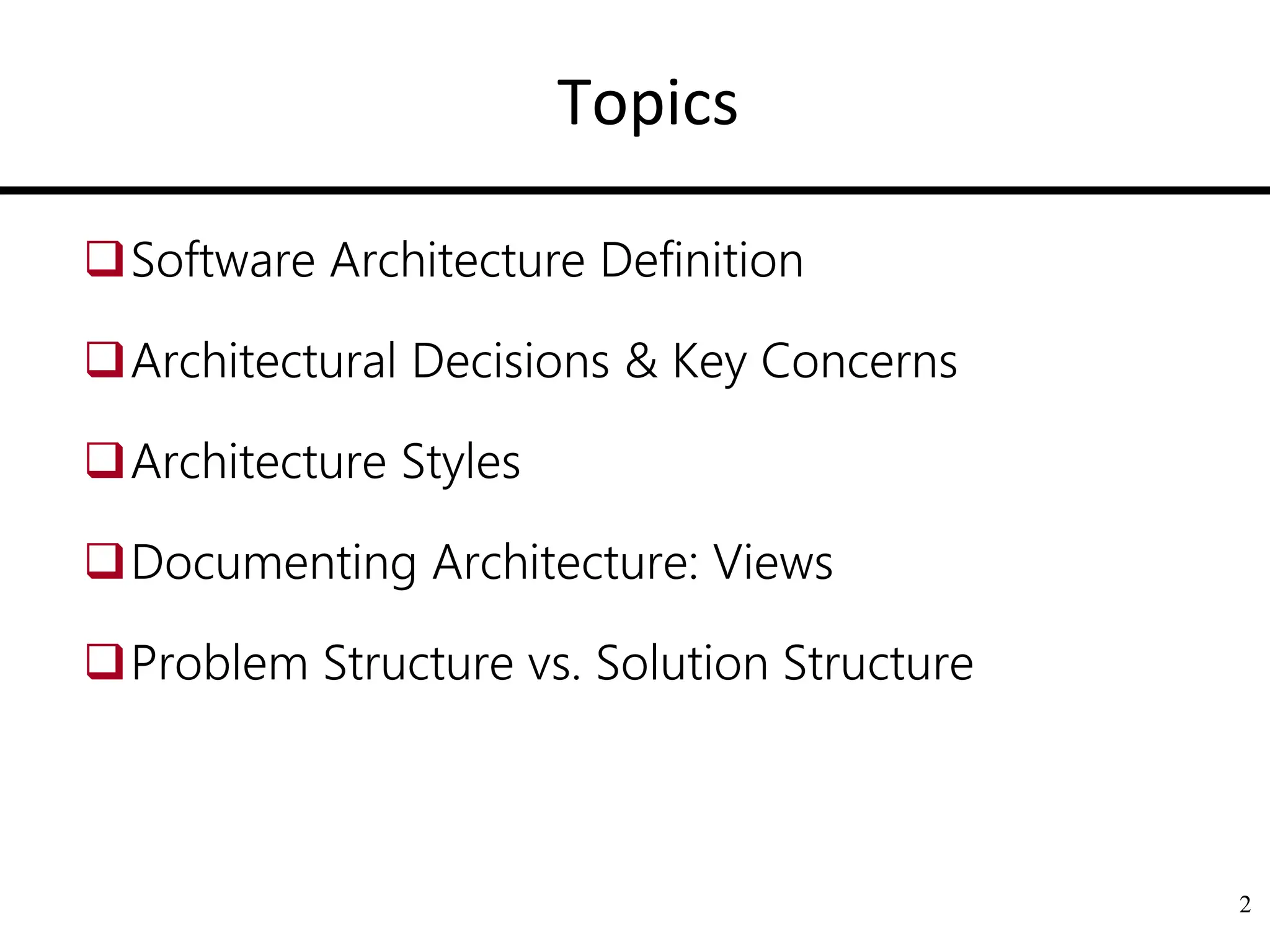

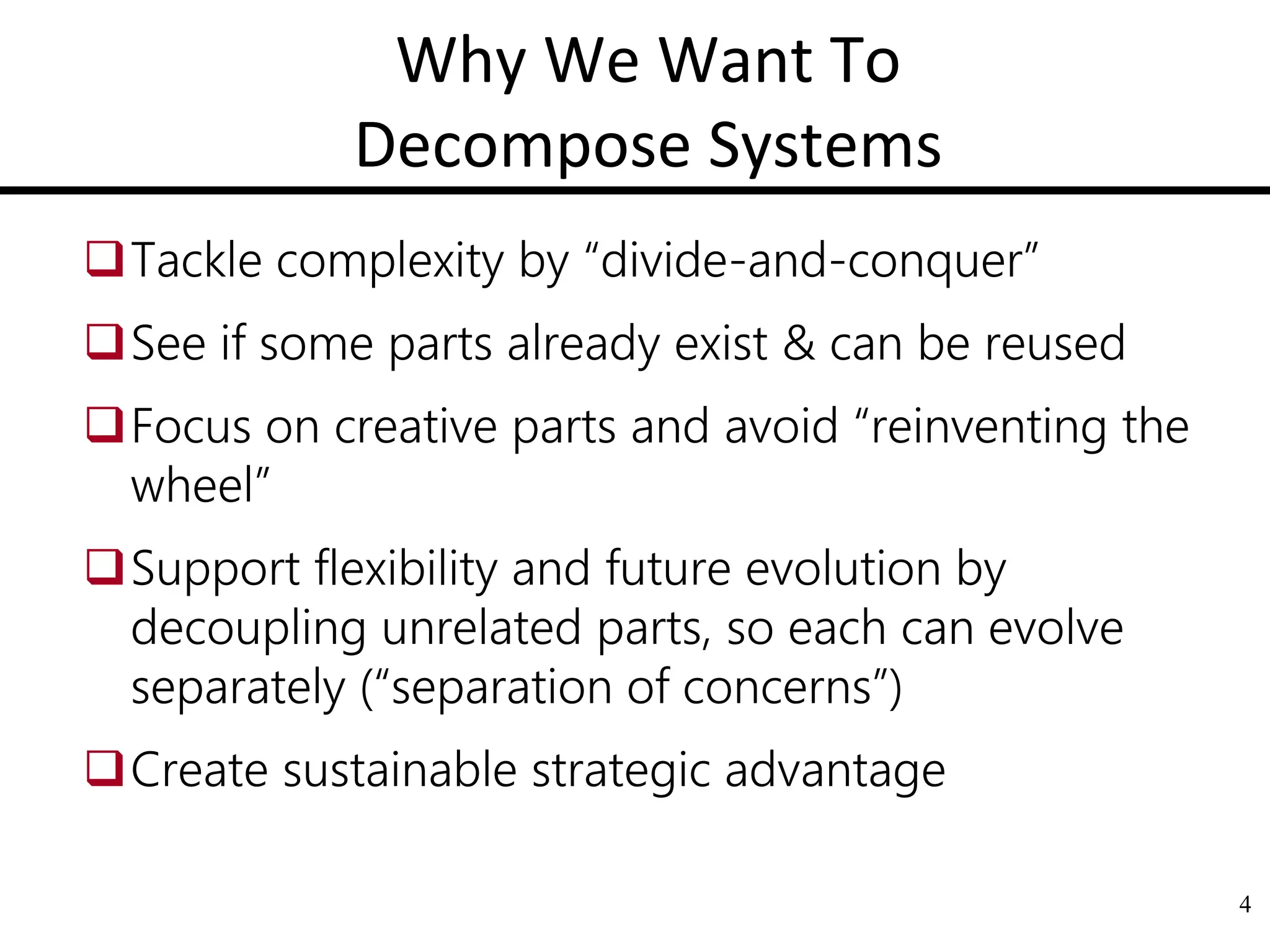

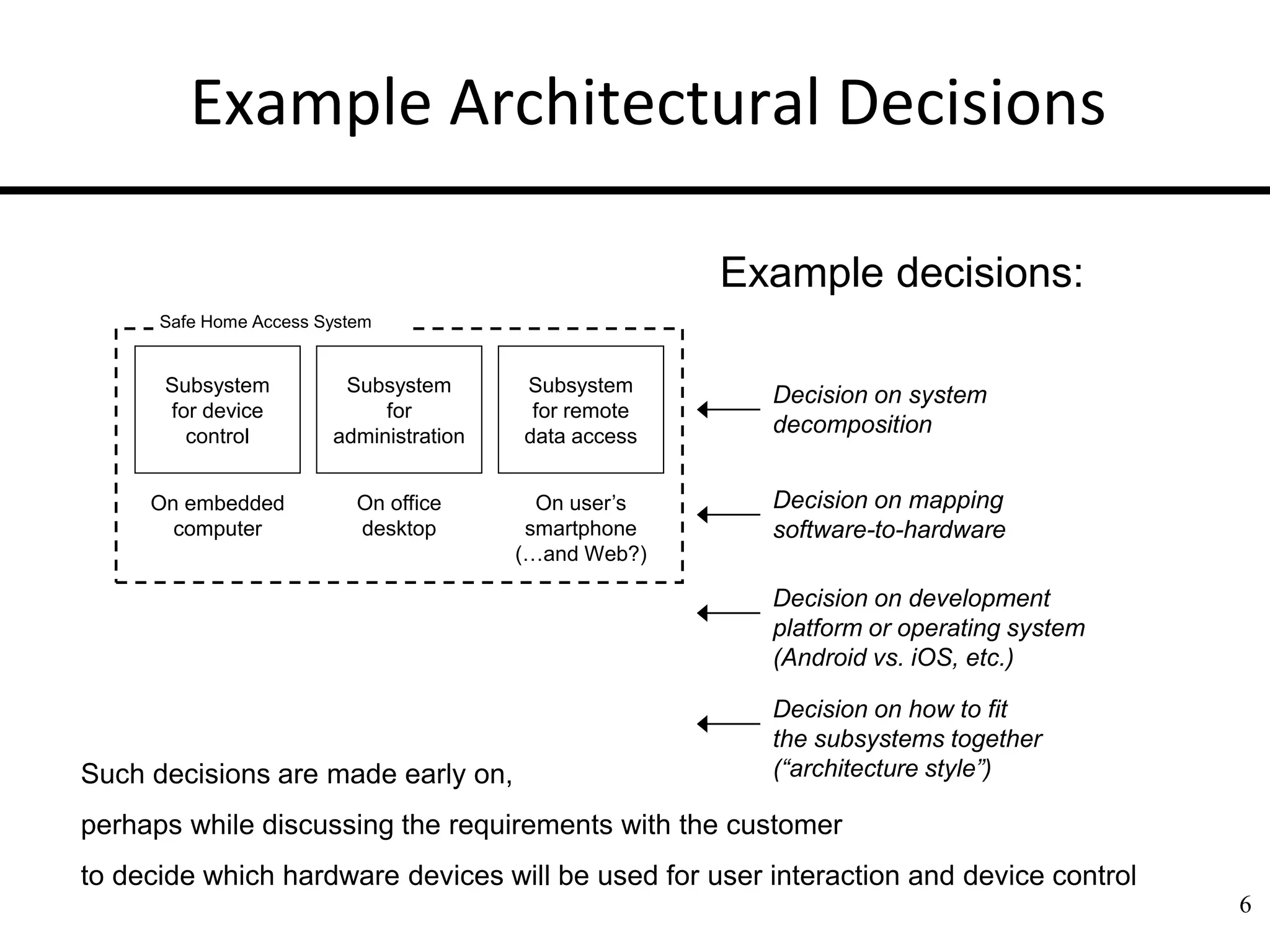


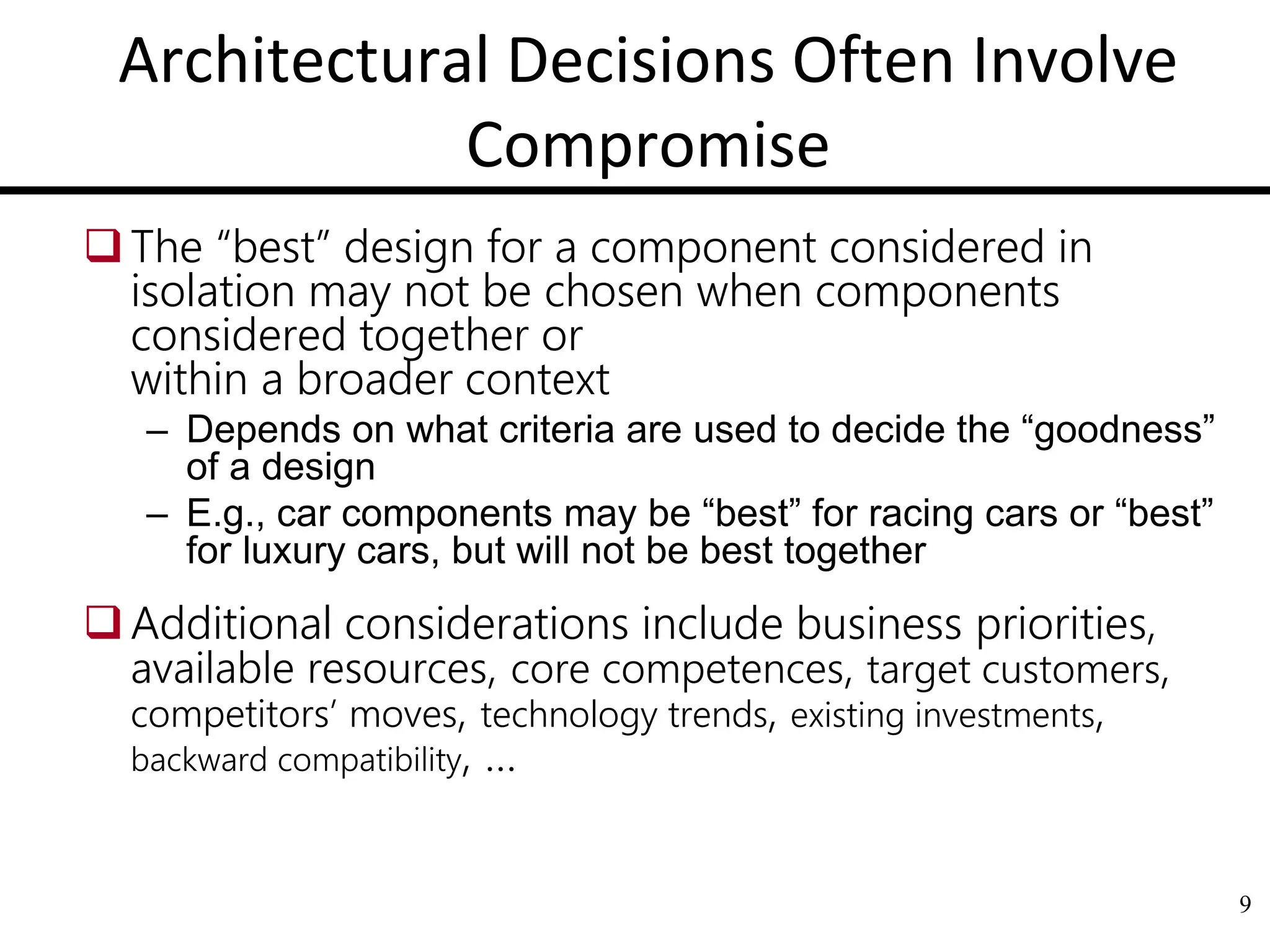
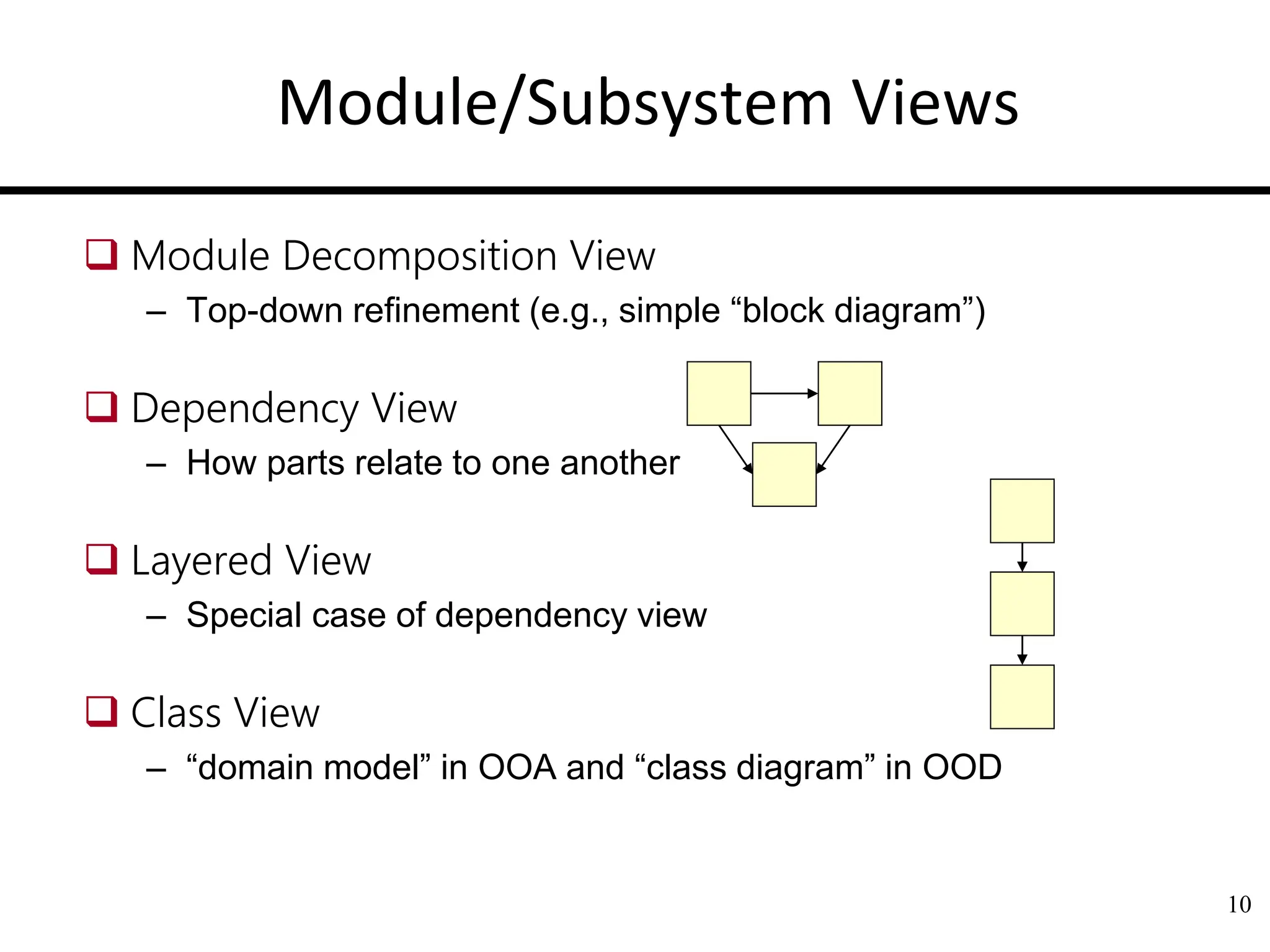
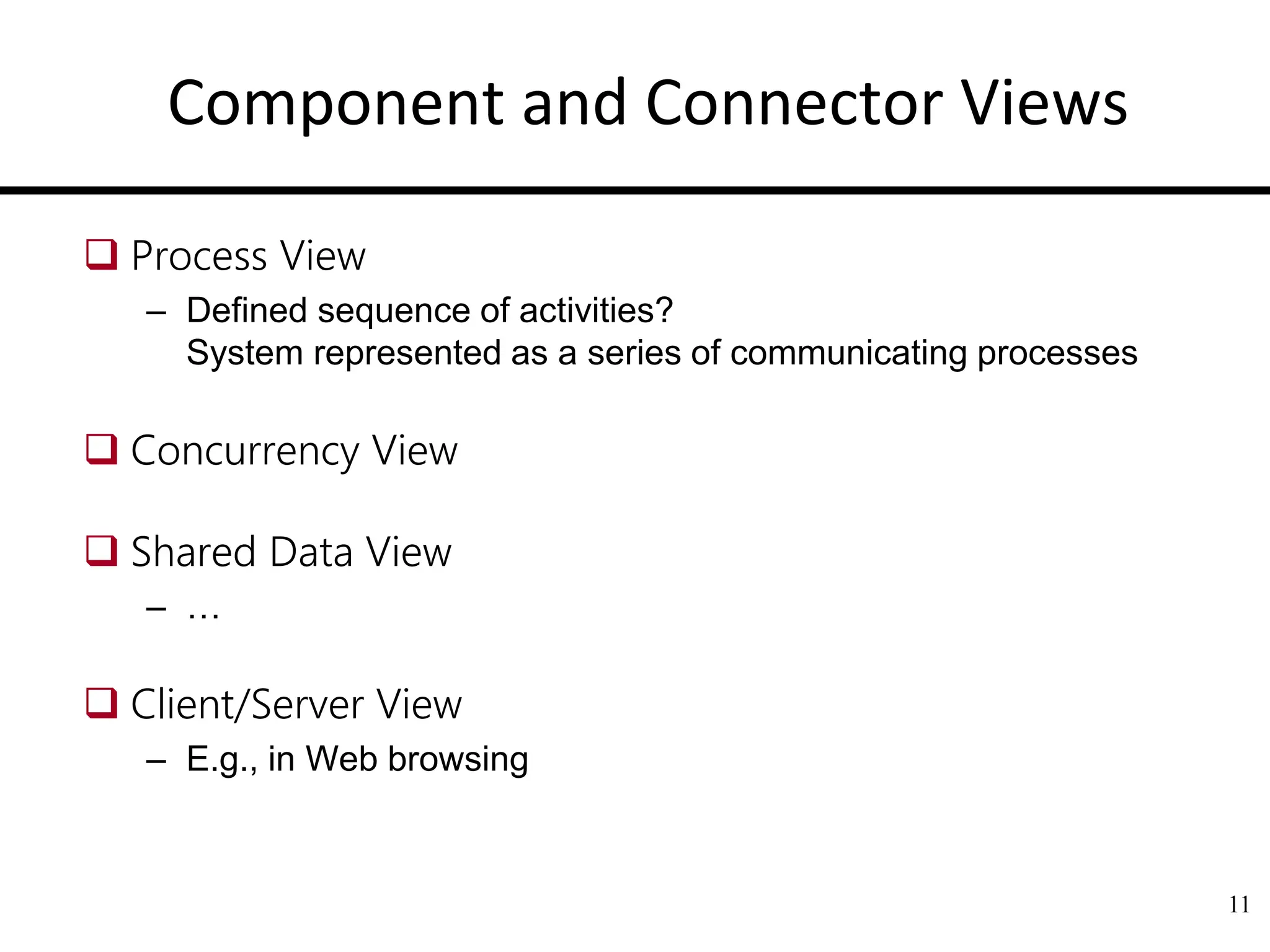


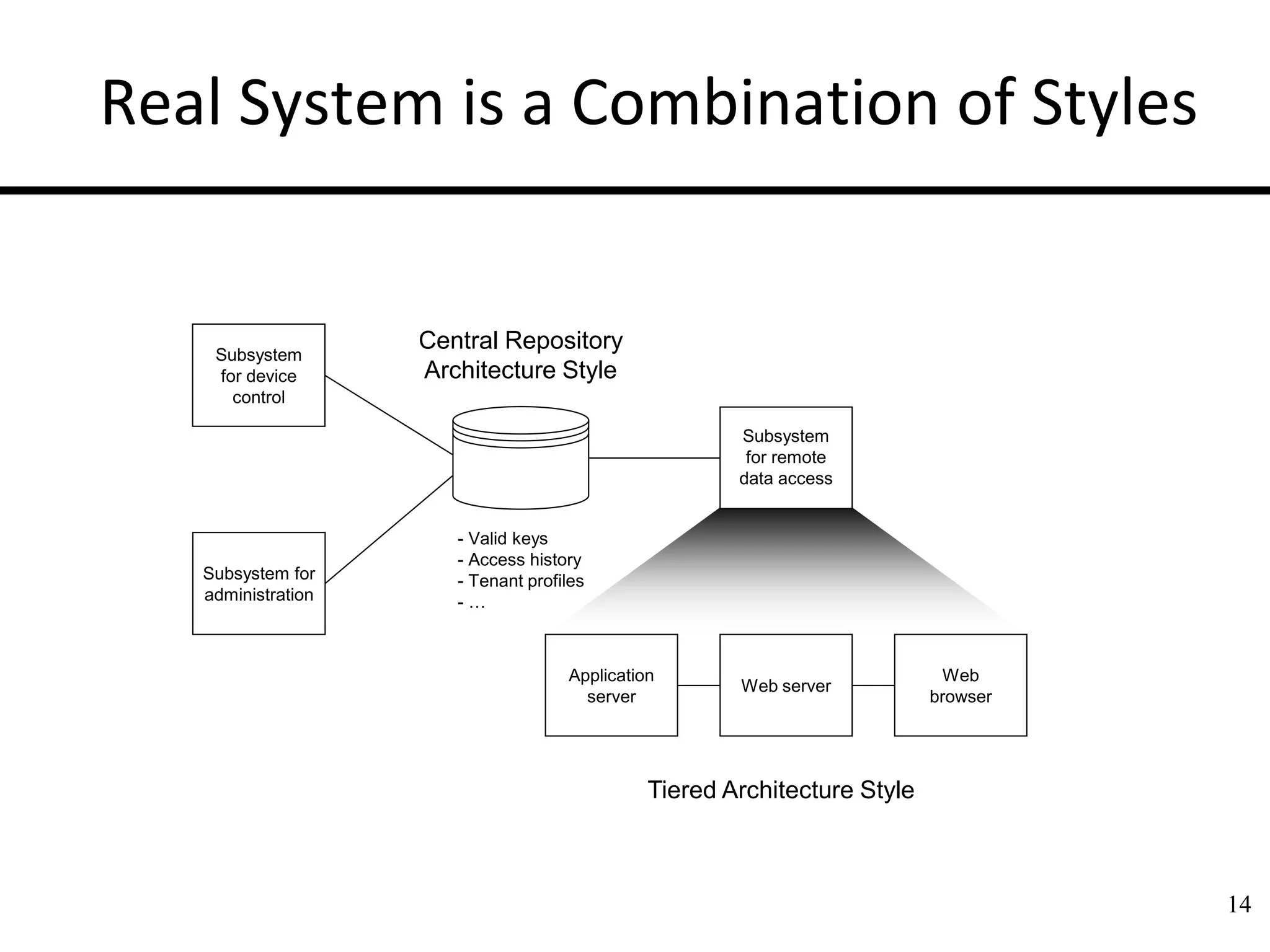

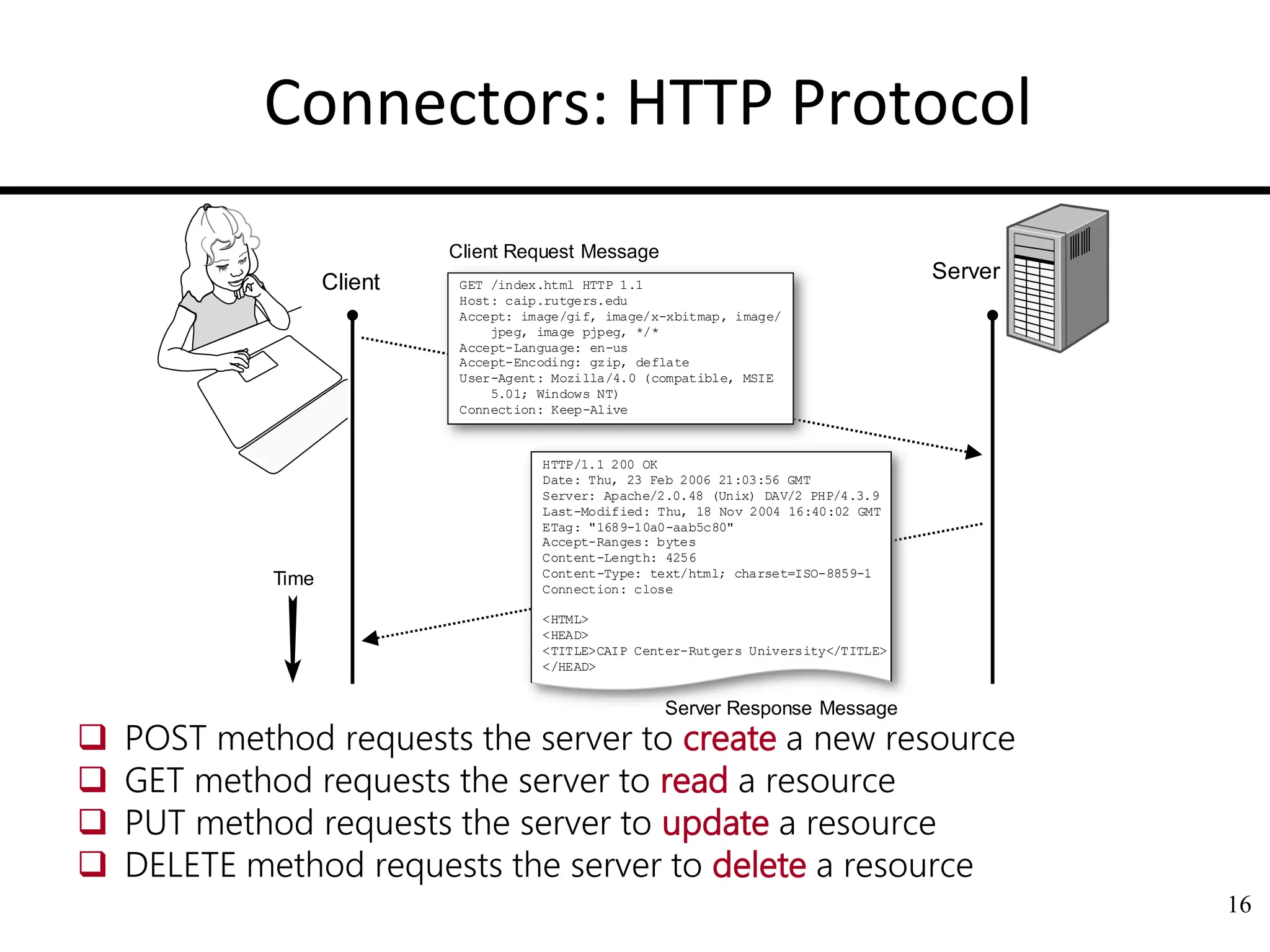


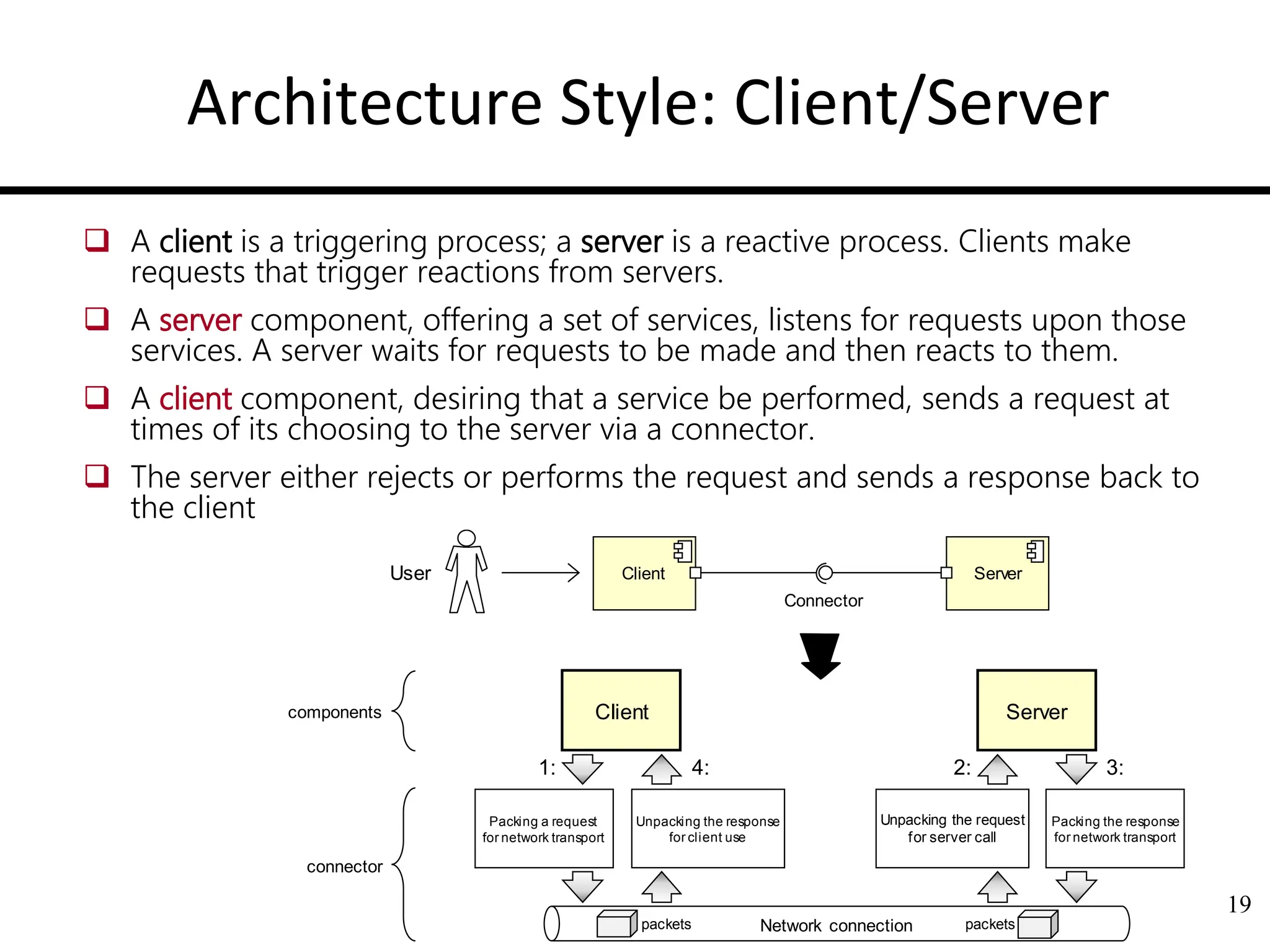


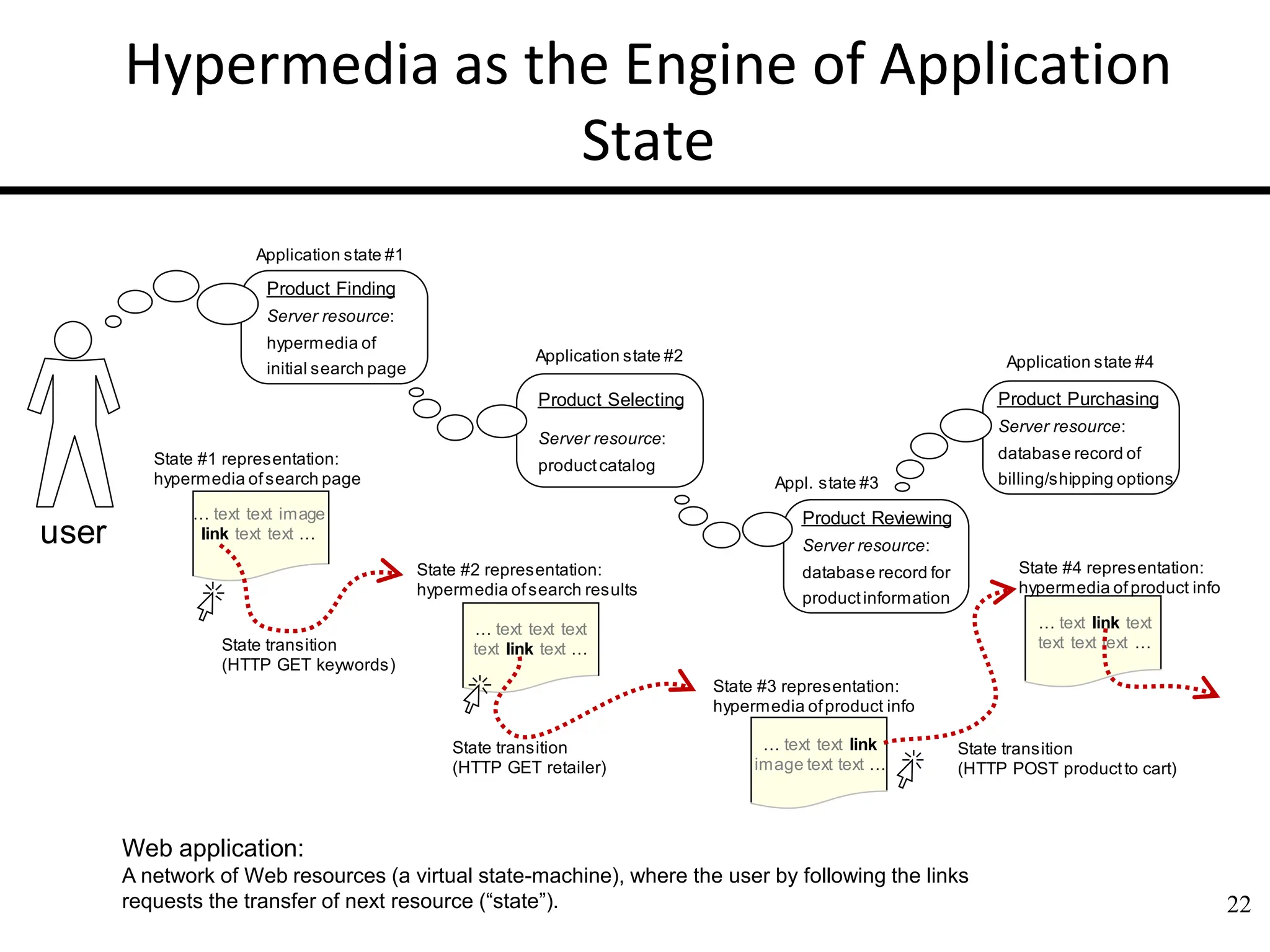





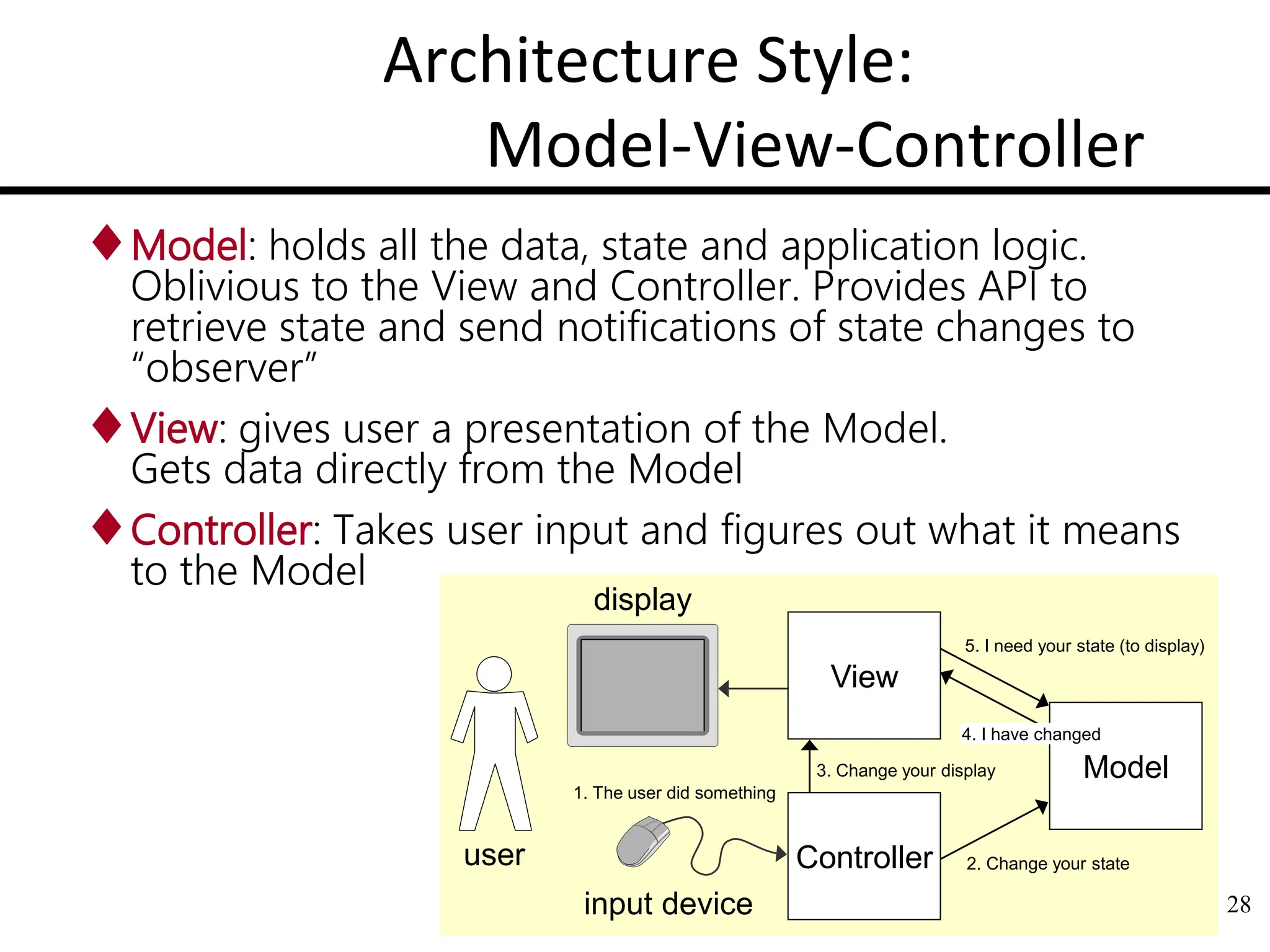
![29
Model-View-Controller
Controller
View
Input
device
events
Event
Interpreter
Domain
model
action
Domain
Model
Model
Visualizer
Notification
about the
effects of the
action
Visual feedback
of the altered
model
User
User Interface
Model
14
26
31
14
26
31
versus
Model: array of numbers [ 14, 26, 31 ]
Different Views for the same Model:](https://image.slidesharecdn.com/lec-6softwarearch-240210135414-a418fa8b/75/Software-Architecture-in-Architecture-design-ppt-29-2048.jpg)
